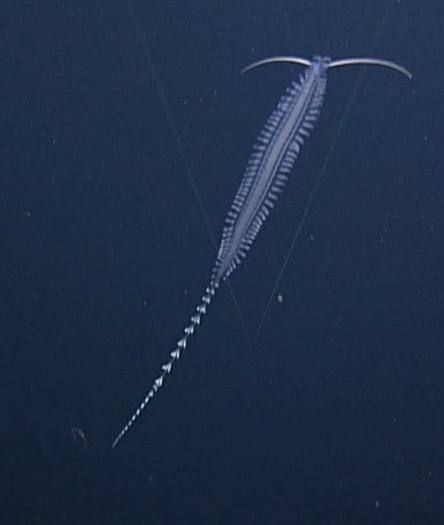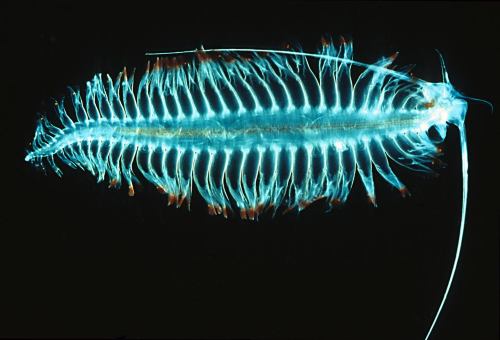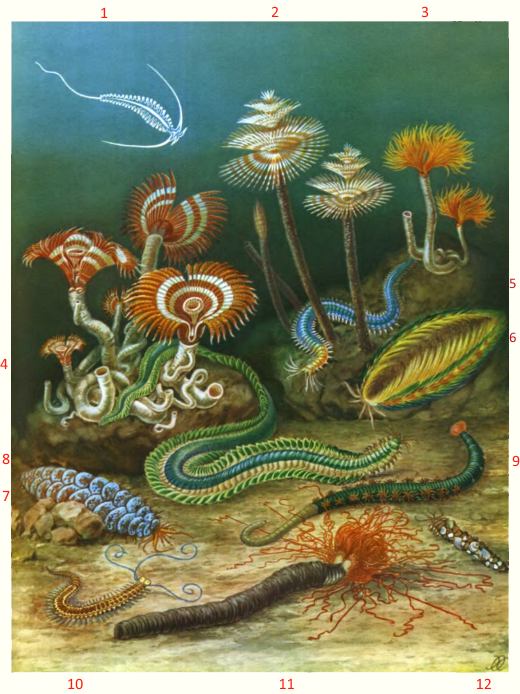tomopteris
This is a marine planktonic group of polychaete worms. They are very common in all they oceans and seas, many of them living in the deep-sea. All of these tomopteris species emit blue light, called luminescence. Tomopteris helgolandica emits also a yellow light. All Tompteris are transparant and hard to dectect if they don't emit light. It feeds itself with orther plankton members.
Tomopteris is very transparant. It is not clear why they emit the blue color. This species is Tomopteris renata.
tomopteris luminescence
Bioluminescence is a common feature in the permanent darkness of the deep-sea. In the permanent darkness of the deep ocean a surprising diversity of organisms, from bacteria to fishes, generate their own light to find food, communicate or avoid predation. Luciferin is the generic name for the small molecule that produces light upon oxidation, and the luciferase or photoprotein is the species-specific enzyme that catalyzes the reaction.But emitting yellow light is very rare in the deep-sea world. If disturbed, Tomopteris helgolandica releases bioluminescent particles from their parapodia. It is thought that this mode is to distract predators.

Tomopteris helgolandica is capable of emiting yellow light, the lights are placed on the end of the parapodia. .

Tomopteris emits a bluish light.

Annalid worms of the Arctic and Atlantic oceans.
1 tomopteris renata
2 spirographis spallanzanii
3 mopworm or red fanworm or Protula bispiralis,
4 calcareous tubeworm, fan worm, plume worm or red tube worm or Serpula vermicularis,
5 slender rahworm or Nereis pelagica
6 sea mouse or Aphrodita aculeata
7 Eunoe nodosa
8 ragworm or sandworm, nereis virens
9 lugworm or Arenicola marina
10 Autolytus sp.
11 Amphitrite johnstoni ,a Terebellid worm
12 Onuphis conchilega

1 Tomopteris
2 Spirographis Spallanzanii
3 Protula intestinum
4 Aphrodite aculeata
5 Hydroides norvegicus
6 Lanice conchilega
7 Hermella Sabellariidae